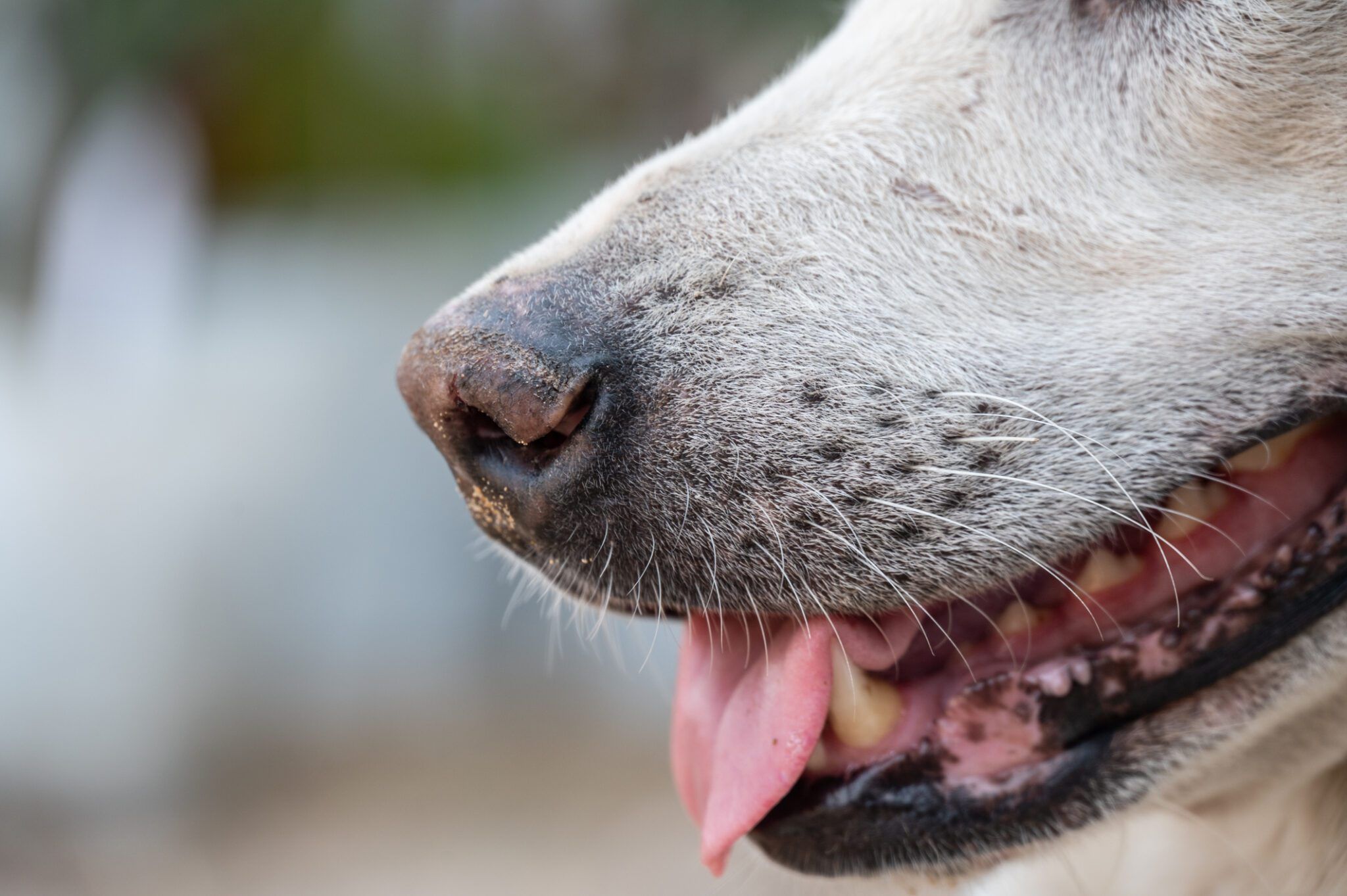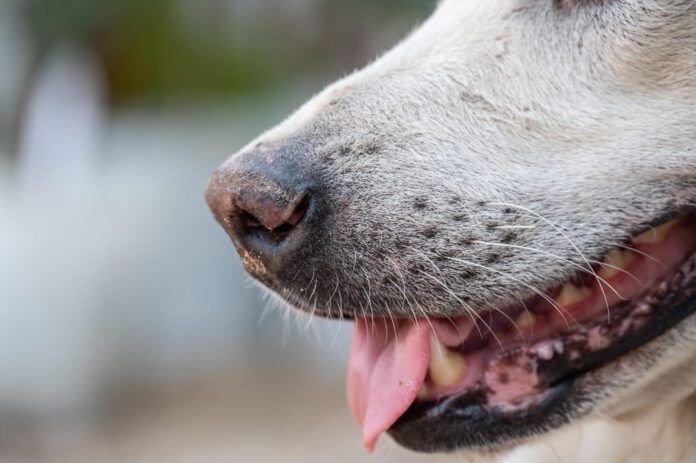When you think of whiskers, you probably picture cats, but dogs also possess a set of whiskers on their muzzle, cheeks, and above their eyes that serve important specific purposes.
Whiskers, also known as vibrissae, play a crucial role in your dog’s perception of the world around him and trace back to his breed’s ancestry. For example, hounds and terriers have longer, more pronounced whiskers, while other breeds without the genes for hunting and tracking may have shorter or less-prominent whiskers.
While whiskers may vary in appearance across breeds, all dogs have them and understanding their function will help you make informed decisions about their care and answer questions such as should you cut your dog’s whiskers (no!).
Why Do Dogs Have Whiskers?
Whiskers are sensitive and embedded in follicles that connect to nerves, allowing dogs to detect even small movements and changes in their environment. The role of whiskers includes:
- Navigation. Whiskers help dogs navigate their surroundings by providing information about objects, obstacles, and potential threats. This is particularly important in close quarters because dogs’ sense of sight is better suited for longer distances. Supplemental vibrissae extensions have even been found to assist blind dogs
- Sensory awareness. Whiskers are sensitive to touch and pressure, detecting even the faintest breeze or the presence of nearby objects, enabling dogs to react quickly to changes in their environment.
- Detecting prey. In their primal days, whiskers were crucial for hunting. They helped dogs detect prey, track their movements, and avoid obstacles in the dark.
- Expressing emotion. Along with body posture, tail position, and vocalizations, whiskers play a subtle role in expressing a dog’s emotions. For example, when a dog is relaxed, their whiskers typically rest in a natural position. If a dog is curious, whiskers may become more erect or twitch. When a dog feels threatened or aggressive, their whiskers might flare out sideways or downward, indicating discomfort or a readiness to defend themselves.
- Protection. Whiskers can serve as a protective mechanism. For example, those near your dog’s eyes may trigger a reflexive blink when they are touched, helping to shield the eyes from potential harm.
Can You Cut Dog Whiskers?
While your dog’s whiskers will grow back if you cut them, it’s important to remember that you’re compromising their sensory abilities. Trimming whiskers might tempt you for aesthetic reasons, especially if you’re showing your dog and need to meet specific requirements.
“If you touch his whiskers, your dog will often reflexively blink because of the information the whisker transmitted to the brain: Something is near the face, protect the eye! Whiskers serve an important sensory and protective function for your dog,” says Syracuse, N.Y., veterinarian and Whole Dog Journal contributor Dr. Andrea Lee. This sensory area is particularly concentrated in the regions associated with whiskers, which highlights their importance for a dog’s neurological function.
If your dog’s whiskers are becoming overly long or matted, consult with a professional groomer who can trim them carefully without compromising their functionality. Your veterinarian can also provide advice on how to maintain your dog’s whiskers and keep them clean and healthy.

